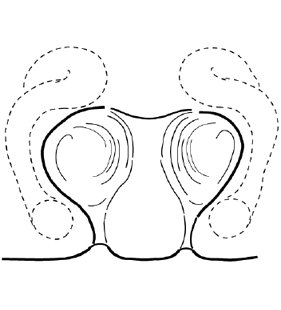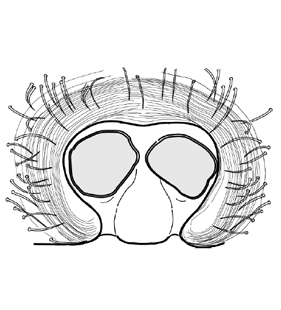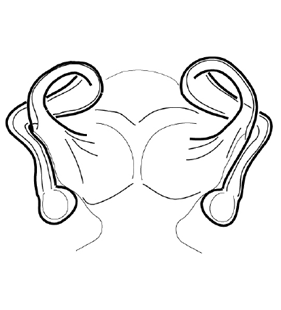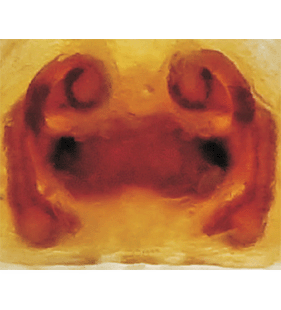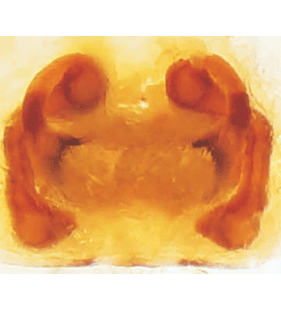Cheiracanthium ilicis Morano & Bonal, 2016
Beschreibung
Männchen
Prosoma gelblich, im Bereich der Augen dunkler. Subadulte sind einfarbig grün und werden nach der Adulthäutung gelb. Clypeus schmaler als Durchmesser der AME. Sternum dreieckig und orange. Cheliceren dunkel braun-organge, aussen basal mit kleinen Ergebungen. Palpus sowie Patellae und Tarsen der Beine stachellos, Femora mit 2 Paar seitlichen Stacheln, Metatarsi III/IV mit 3 Paar seitlichen Stacheln, Tibia I mit 9-11 ventralen Stacheln. Palpus: Tarsus länger als Patella und Tibia zusammen.
Körperlänge Männchen: 9.4 mmWeibchen
Aussehen und Färbung ähnlich wie Männchen, aber tendenziell grösser und mit kürzereren Beinen. Augen etwas grösser als bei Männchen. Pedipalpus mit einfacher gerader Klaue. Variabilität der Beinbestachelung größer als bei den Männchen.
Körperlänge Weibchen: 8.8-9.7 mmZusätzliche Informationen
Ausschliesslicher Baumbewohner, bevorzugt Baumkronen.
Verbreitung
Phänologie
| Jan | Feb | Mar | Apr | May | Jun | Jul | Aug | Sep | Oct | Nov | Dec |
 |  |
Abbildungen
Verbreitungsnachweise
"No reference" bedeutet nicht, dass die Art in diesem Land nicht vorkommt, sondern dass wir die Referenz hierfür noch nicht eingefügt haben. Wir arbeiten daran.
Literatur
Branco V V, Morano E, Cardoso P (2019) An update to the Iberian spider checklist (Araneae). Zootaxa 4614: 201-254 ![]()
Morano E, Bonal R (2016) Cheiracanthium ilicis sp. n. (Araneae, Eutichuridae), a novel spider species associated with Holm Oaks (Quercus ilex). ZooKeys 601: 21-39 ![]()
Urones C (2023) Cheiracanthium C.L. Koch, 1839 (Araneae, Cheiracanthiidae) ibéricos y de la región Paleártico-occidental. 1. Novedades sobre Ch. mildei L. Koch, 1864 y Ch. ilicis Morano & Bonal, 2016. Revista Ibérica de Aracnología 43: 9-29 ![]()
WSC (2025) World Spider Catalog. Version 26. Natural History Museum Bern, online at http://wsc.nmbe.ch (28.2.2025) doi: 10.24436/2 ![]()







